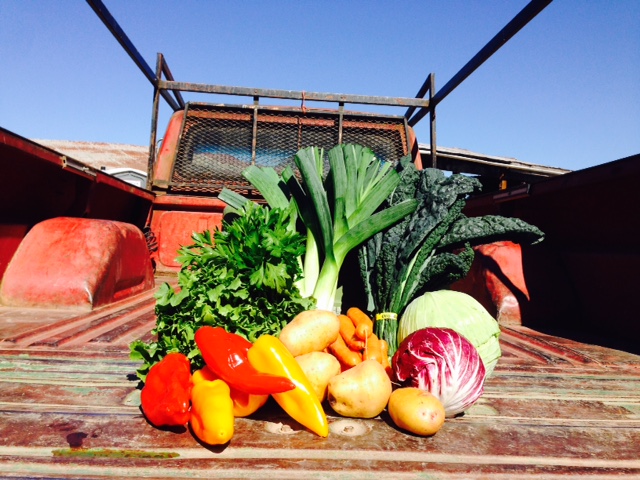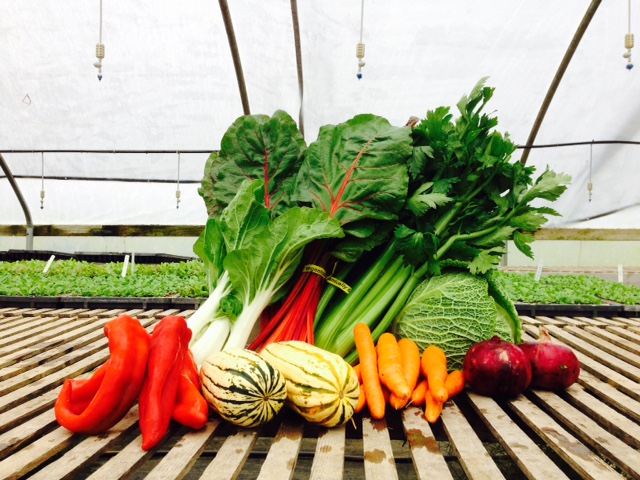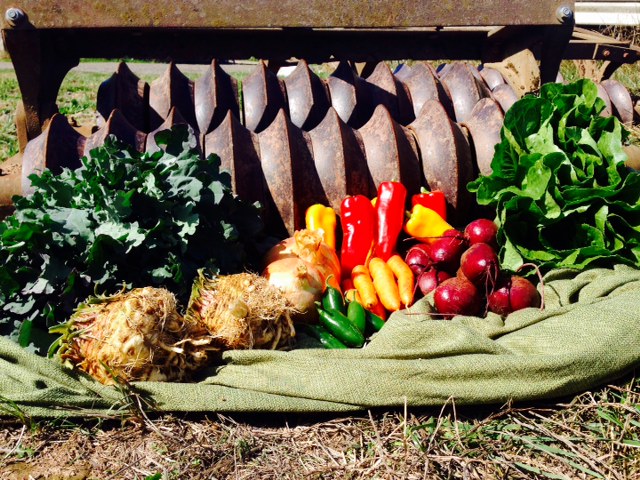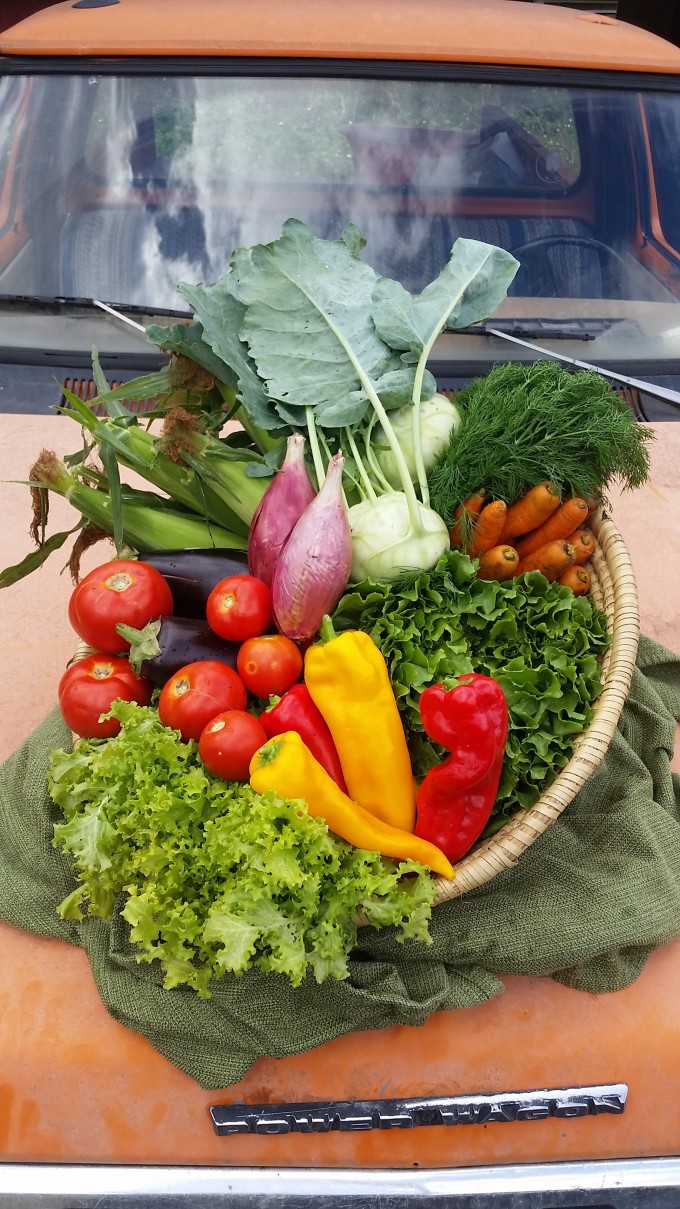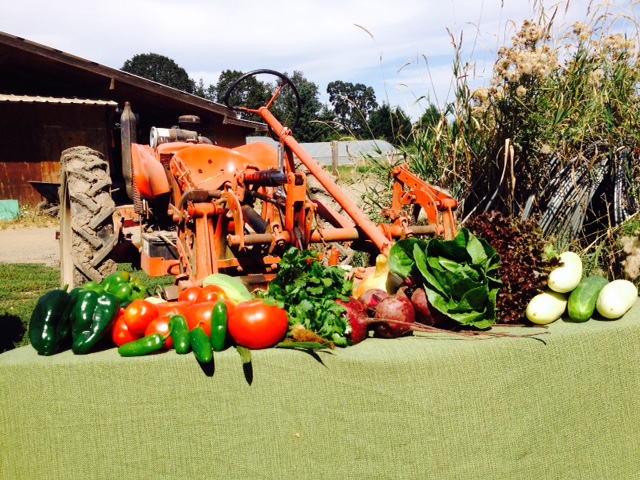In Your Share This Week
- Carrots
- Celeriac
- Corn (please read below)
- Kale
- Leeks
- Parsley
- Winter Squash, Delicata
Crop Notes
Corn: The results of our late-season corn trial are in! We planted an assortment of varieties to see how they all performed, so you may see yellow, bi-color, or white corn in your share this week. The ears are a little smaller than summer corn, but its an exciting final taste of summer. The only downside we saw with this trial was the prevalence of worms…so what we would advise doing before shucking or anything else is to grab a sharp and/or large knife and hack about 1 inch off the tip of the ear. That should eliminate the portion that contains the worm and all the grossness around it. Now you’re ready to shuck and eat!
Kale: This week we are featuring Red Russian for everyone, which you all have seen in your shares throughout the season. Full Share members will also receive a bunch of White Russian, which has broader leaves and a more delicate texture.
Around the Farm
 We are in the full swing of Fall, and spending most of our days harvesting crops like carrots, beets, celeriac, kohlrabi, and cabbage before the rains start in earnest and harvest becomes a sloppy mudfest. We are also excited to be doing a lot of field cleanup- removing drip tape, taking down cucumber trellises, and turning the summer fields over to our winter cover crops. Large portions of the farm are now emerald green carpets of cover crop that are turning sunlight and water into next season’s fertility, reducing soil compaction or erosion (from rain), increasing organic matter, preventing nutrients from washing away (also from rain), and keeping the weeds at bay. We select specific cover crops or mixes for each field depending on the time of year, what has been previously grown there, any prevalent pests or diseases, and what may be grown there in the future.
We are in the full swing of Fall, and spending most of our days harvesting crops like carrots, beets, celeriac, kohlrabi, and cabbage before the rains start in earnest and harvest becomes a sloppy mudfest. We are also excited to be doing a lot of field cleanup- removing drip tape, taking down cucumber trellises, and turning the summer fields over to our winter cover crops. Large portions of the farm are now emerald green carpets of cover crop that are turning sunlight and water into next season’s fertility, reducing soil compaction or erosion (from rain), increasing organic matter, preventing nutrients from washing away (also from rain), and keeping the weeds at bay. We select specific cover crops or mixes for each field depending on the time of year, what has been previously grown there, any prevalent pests or diseases, and what may be grown there in the future.
We also were very excited to provide some late-season Poblano peppers to Hot Winter Hot Sauce, a great local company thats making a zesty rainbow of hot sauces with a great mission. You can find them all over Portland at New Seasons, Green Zebra, Alberta Coop, Food Front, or Barbur World Foods. Go grab a few bottles and spice up your life!
Meet Your Farmer
 Francisco L Guzman Cortes
Francisco L Guzman Cortes
Hometown: Oaxaca, Mexico
Joined SIO Crew: 2011 Mayo. Francisco cosecha y lava todo de nuestra verduras para la CSA, siembra la lechuga en papel, y lava las cajas. Antes de llegar en Sauvie Island Organics, el ya habia hecho trabajo de finca en la finca de su familia en Oaxaca, México–allí tienen maíz, frijol, cacahuate, y calabaza. Tambien trabajaba en una finca en Washington, y alla manejaba la machina de cosechar frambuesa, manejaba el tractor que recogía los cajones de durazno, y cosechaba tanto duraznos. (May 2011. Francisco harvests and washes all of our CSA veggies, seeds much of our lettuce mix into paper pots, and bin washes. Before coming to SIO, he had worked on his family farm in Oaxaca, Mexico where they cultivate corn, beans, peanuts, and squash. Also, Francisco has worked on a farm in Washington where he drove and operated the raspberry harvesting machine, drove the tractor to collect crates of peaches, and harvested tons of peaches.)
Favorite fruit/vegetable: Todas las vegetales le encantan y todas las frutas le encantan!! (He loves all vegetables and loves all of the fruits too!!)
Favorite part of working on the farm: Francisco le gusta mucho cosechar. Pues, le gusta todo– “en todo me gusta, porque siembro, cosecho, y como!!” (Francisco likes harvesting very much. He really likes everything–“I love everything because I get to plant, harvest, and then eat!!”)
What he does off the farm: Mira la tele, ayuda su esposo Carmelita con la cocina, picar cebolla, limpiar las tomates–todo en la cocina… En invierno cuando no hay mucho trabajo en la finca, el va por Alaska para procesar cangrejo.(Francisco watches television and helps his wife Carmelita in the kitchen, chopping onions, cleaning tomatoes–everything in the kitchen… In Winter when there is less farm work, he spends time in working in a cannery in Alaska processing crabs.)

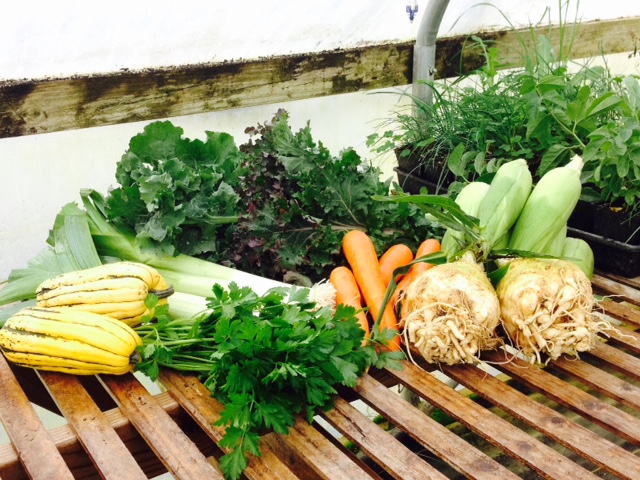
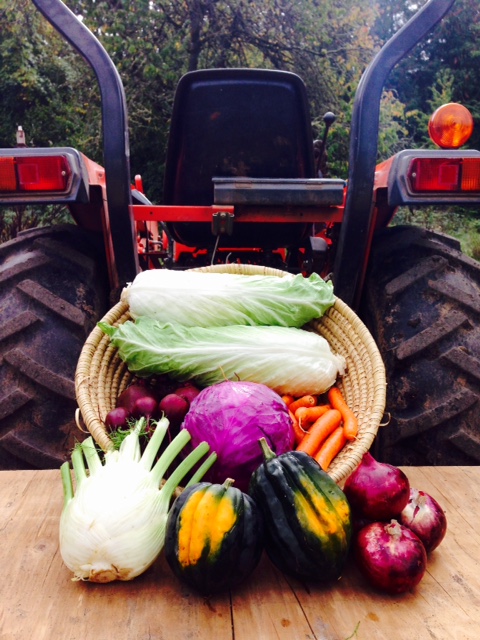


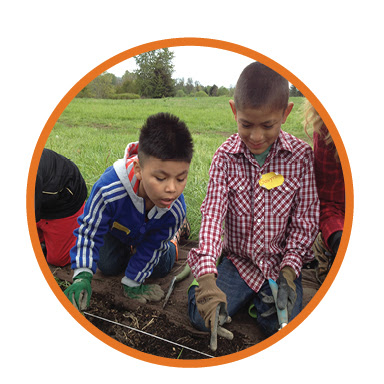

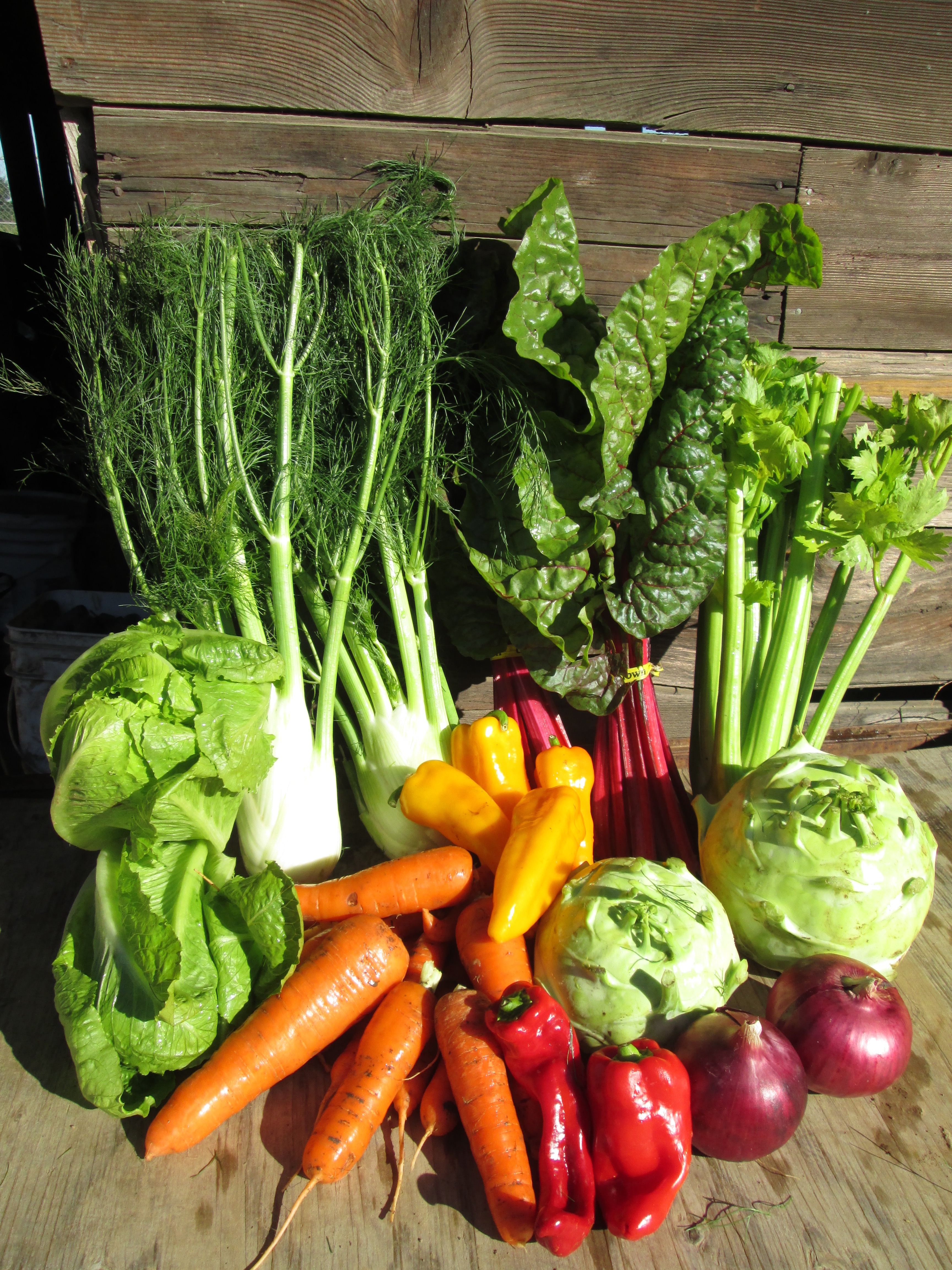

 . An ideal seeding sequence step by step is usually as follows. Mow the leftover vegetable plant debris, apply irrigation water, wait a few days and then till the soil, wait a week or more until there is a thick cover of newly germinated weed seeds (like an huge Chia-Pet carpet), at that point broadcast the oats, then lightly disk to kill that first flush of weeds and simultaneously bury the desired oat seeds, finally to provide the best seed to soil contact, we pull a heavy set of ring rollers across the field. Ideally within a week or so we get a rainfall, if not we irrigate to get a well established thick green stand of oats.
. An ideal seeding sequence step by step is usually as follows. Mow the leftover vegetable plant debris, apply irrigation water, wait a few days and then till the soil, wait a week or more until there is a thick cover of newly germinated weed seeds (like an huge Chia-Pet carpet), at that point broadcast the oats, then lightly disk to kill that first flush of weeds and simultaneously bury the desired oat seeds, finally to provide the best seed to soil contact, we pull a heavy set of ring rollers across the field. Ideally within a week or so we get a rainfall, if not we irrigate to get a well established thick green stand of oats.